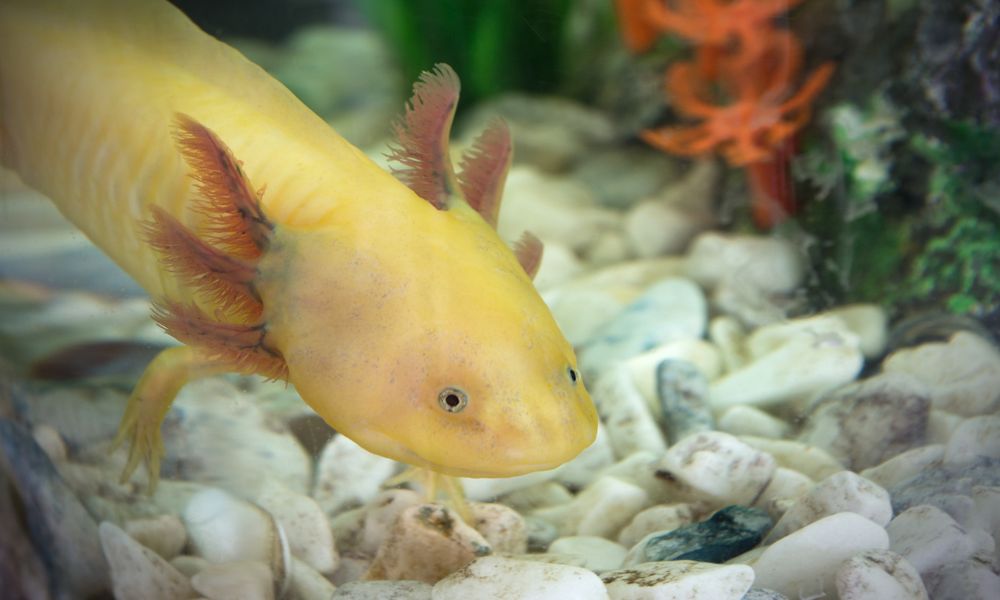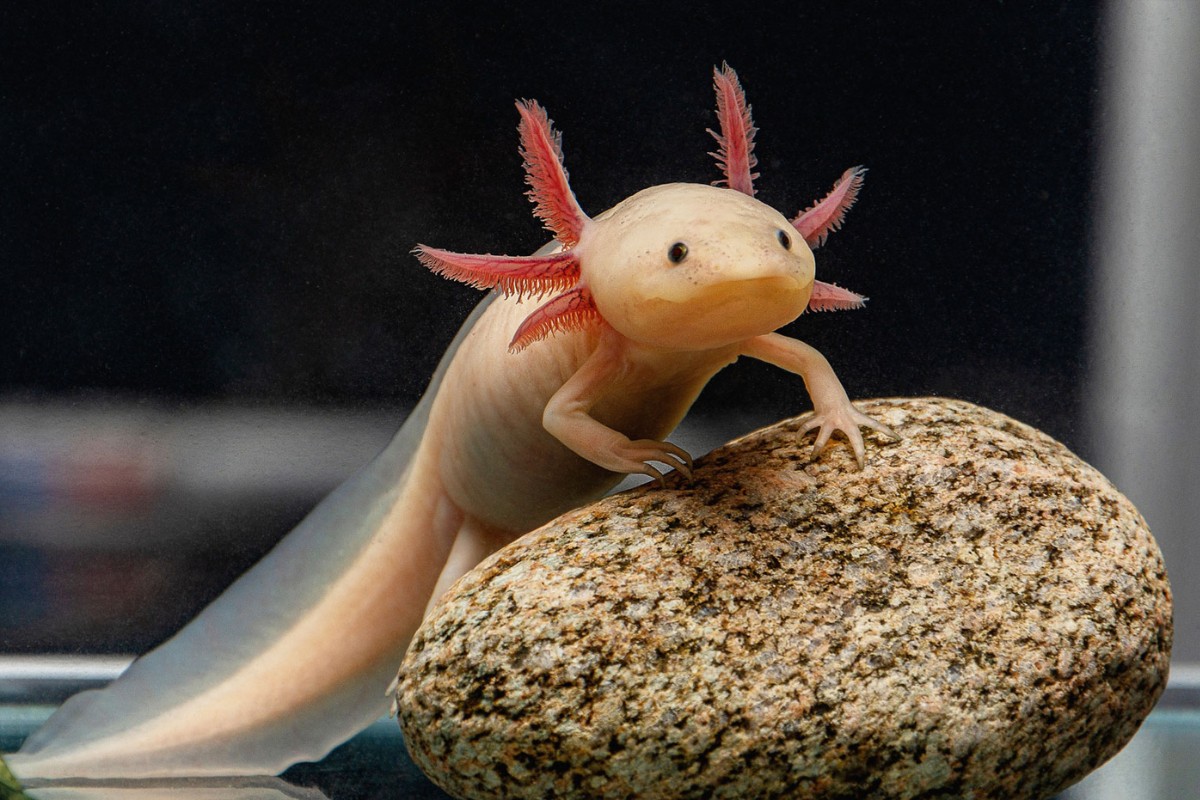As an experienced fish keeper, I’ve journeyed through the intricacies of maintaining a thriving home aquarium, and today, we’re focusing on a question that often puzzles both seasoned and novice axolotl owners alike: Can you hold axolotls?
Yes, you can hold axolotls, but it requires extreme caution. These unique amphibians, known for their regenerative abilities and distinctive gills, are highly sensitive to touch and environmental changes. As aquatic pets, axolotls thrive best with minimal handling to prevent stress and potential health issues.
Axolotls, with their unique appearance and intriguing behavior, are more than just an addition to your aquarium; they’re a window into a special realm of aquatic life. In this article, we’ll explore the crucial aspects of axolotl care, especially the implications of handling these delicate creatures.
Our goal is simple yet vital – to provide you with clear, professional insights so you can understand and appreciate the needs of your axolotl, ensuring their health and happiness in your care.

The Risks of Handling Axolotls
Handling axolotls, though sometimes necessary, poses significant risks due to their delicate nature. Firstly, the fragility of an axolotl’s skin cannot be overstated. These creatures have extraordinarily thin, permeable skin, which is crucial for their unique respiratory process but also makes them vulnerable to physical harm.
Even the gentlest touch can cause micro-abrasions or damage their external slime coat, which serves as a protective barrier against infections and helps in osmoregulation.
Moreover, the risk of transferring harmful bacteria is a serious concern. Our hands, despite appearing clean, harbor a myriad of microscopic entities that can be detrimental to axolotls.
The introduction of foreign bacteria to their environment can lead to infections, disrupting their delicate microbiome balance. This is why hand washing and using gloves are essential if handling is unavoidable.
Stress, induced by handling, has far-reaching impacts on axolotls’ health and well-being. Axolotls are not accustomed to being out of water and can experience significant stress when lifted into an unfamiliar environment.
This stress can weaken their immune system, making them more susceptible to diseases. Additionally, stress can lead to behavioral changes, such as reduced feeding or hiding, which can further compromise their health.
When and How to Safely Handle Axolotls
Handling axolotls should always be a last resort, done only when absolutely necessary. Situations warranting this include tank cleaning, health assessments, or veterinary visits. Here’s a step-by-step guide to ensure the safety and minimal stress for your axolotl during these rare occasions:
- Prepare in Advance: Before handling, ensure everything you need is ready. This preparation minimizes the time your axolotl spends out of their aquatic environment.
- Hand Hygiene: Wash your hands thoroughly with antibacterial soap and rinse well to remove any residue. Alternatively, use latex-free, powder-free gloves.
- Gentle Scooping: Instead of grabbing the axolotl, gently scoop them up with a soft mesh net or a plastic container. This method is less invasive and reduces direct contact.
- Supporting the Axolotl: If you must hold them, do so with a wet hand to mimic their aquatic environment. Ensure your grip is gentle but secure to prevent them from slipping or thrashing.
- Minimize Air Exposure: Keep the axolotl out of water for the shortest time possible. If they need to be out for an extended period, like during a vet visit, ensure they are kept moist using wet towels or a water-filled container.
- Careful Return: When returning the axolotl to their tank, do so gently. Allow them to swim out of your hands or the container to avoid any shock from a sudden drop.
- Post-Handling Care: Observe your axolotl for any signs of stress or discomfort after handling. If you notice any unusual behavior, consult with a vet experienced in amphibian care.

Alternatives to Handling Axolotl
Interacting with your axolotl doesn’t have to involve direct handling. There are several ways to enjoy and enrich your axolotl’s life without physical contact, ensuring their safety and happiness.
1. Observational Interaction
The most straightforward way to enjoy your axolotl is simply by watching them. Axolotls have fascinating behaviors that can be observed from outside the tank. Set up a comfortable seating area near their aquarium to watch their daily activities, feeding habits, and playful movements.
2. Aquarium Decorations
Enhance your axolotl’s environment with various aquarium decorations. Caves, tunnels, and plants not only make the tank more aesthetically pleasing but also provide hiding spots and exploration areas for your axolotl. These additions can stimulate their natural behaviors and offer mental stimulation.
3. Interactive Toys
While axolotls don’t play with toys like some other pets, certain aquarium-safe items can pique their curiosity. For example, floating balls, rings, or safe, non-toxic objects that they can push or investigate can add variety to their environment.
4. Feeding Time Engagement
Feeding time is an excellent opportunity for interaction. Use feeding tongs to offer food, which allows you to observe their feeding response up close without touching them. This also helps in monitoring their diet and health.
5. Tank Maintenance as Interaction
Regular tank maintenance, such as cleaning and water changes, although not direct interaction, is crucial for your axolotl’s well-being. This care demonstrates your commitment to their health and provides a clean, comfortable habitat for them.
6. Learning and Sharing
Educating yourself about axolotls and sharing your knowledge with others can be a form of interaction. Join online forums, social media groups, or local clubs dedicated to axolotl care to connect with fellow enthusiasts.
By engaging with your axolotl through these alternative methods, you can build a bond that respects their nature and ensures their well-being. This approach not only benefits the axolotl but also enriches your experience as a pet owner, deepening your understanding and appreciation of these unique creatures.

Leave a Reply